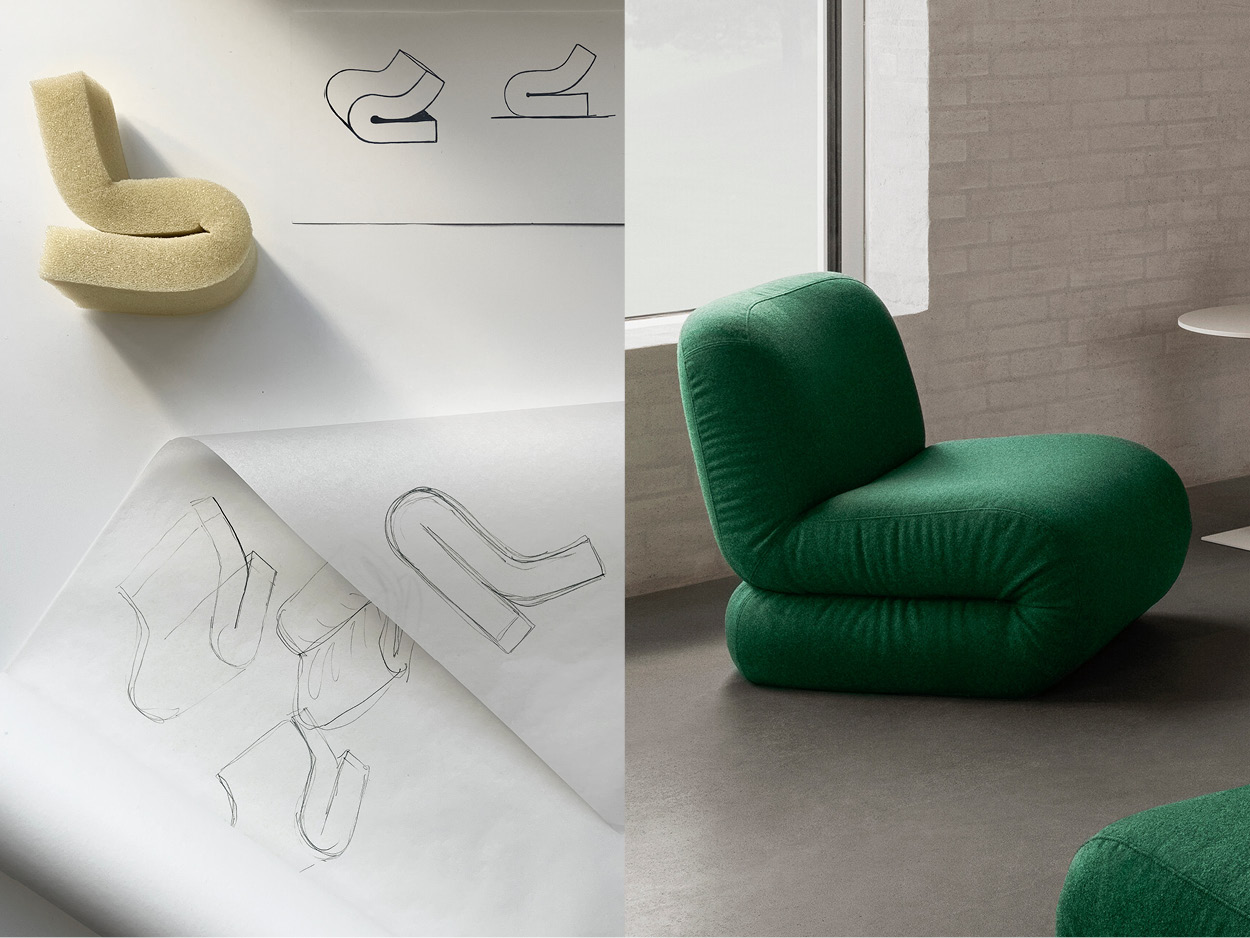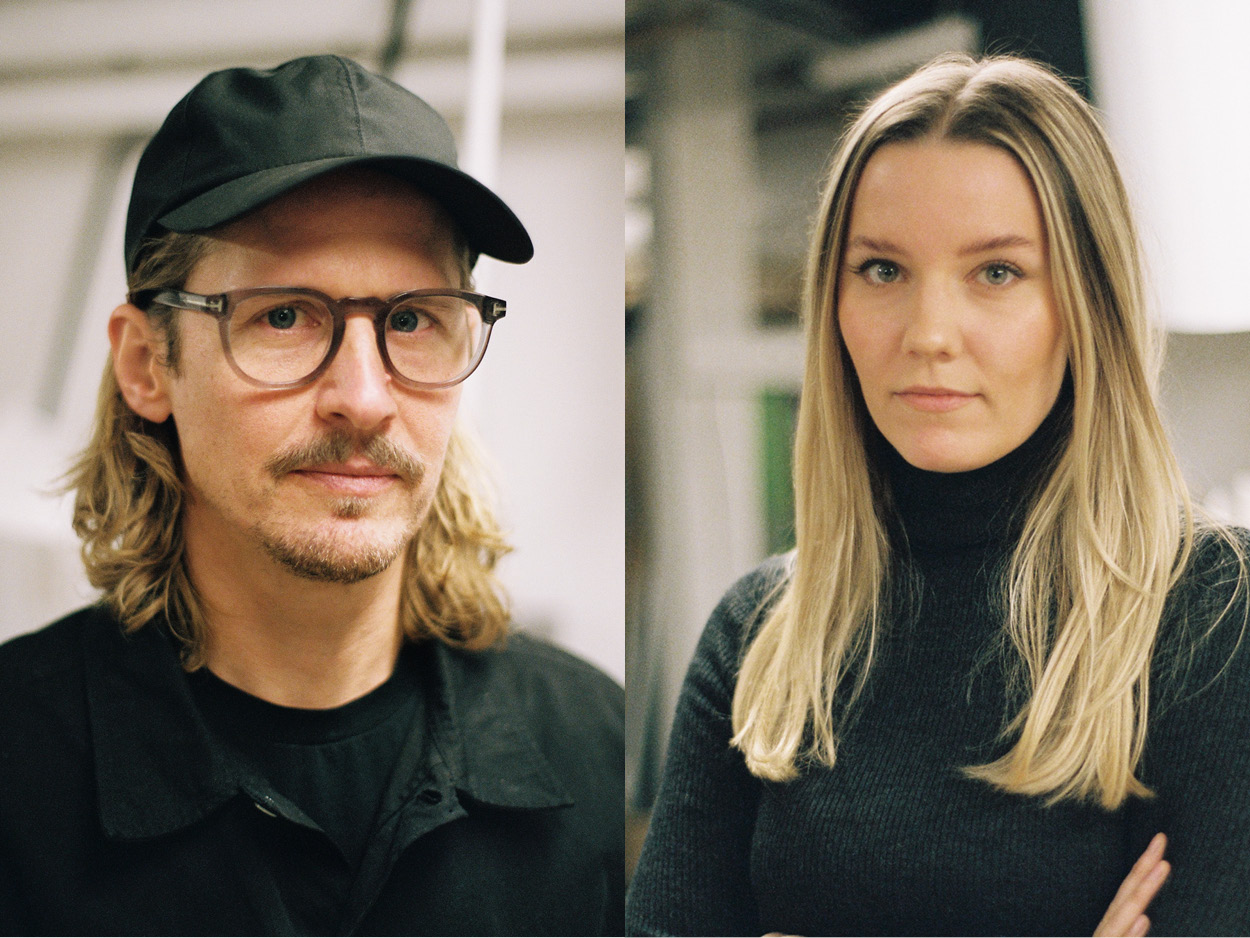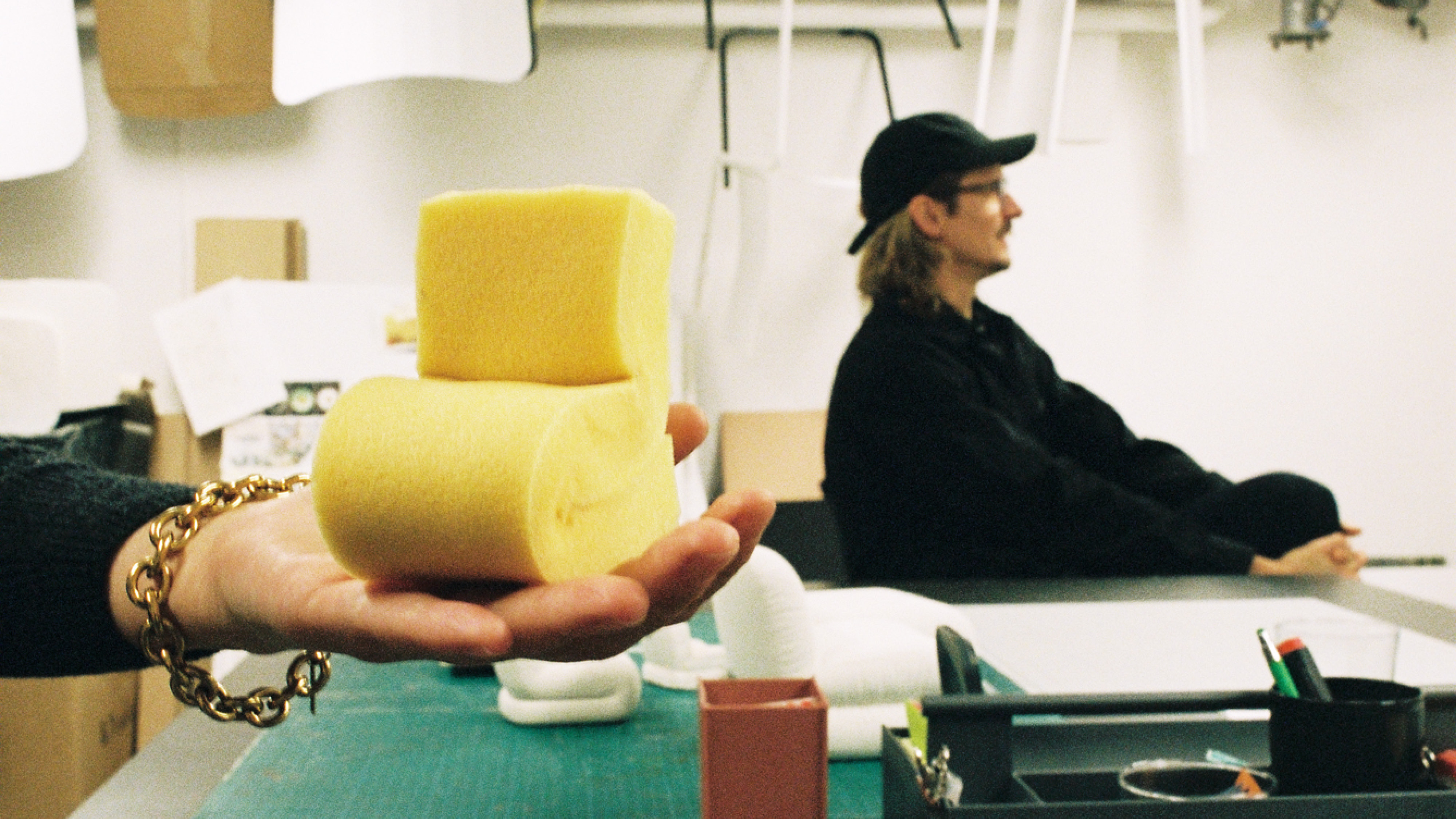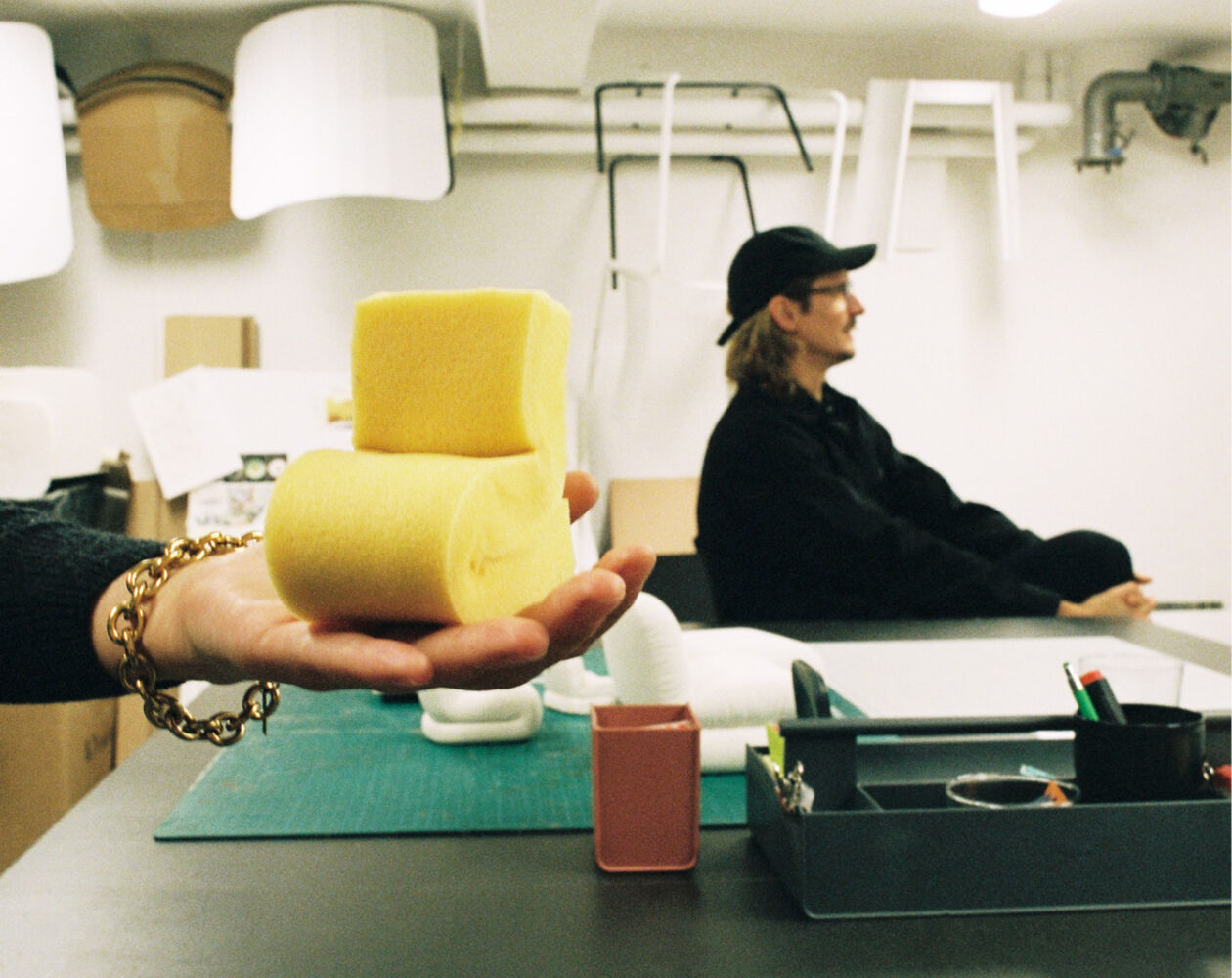We sat down with Malin Engvall and Kristoffer Fagerström from Note Design Studio – the designers behind the new Bau easy chair and sofa for Lammhults. We talked about ugliness, courage, teamwork, and what it is that enables some furniture to keep up with the times and remain relevant through the decades.
It feels like both Sunny, which you designed with Gunilla Allard, and Bau, your new work, have a lot of Lammhults in them. They draw your attention in the same way that Börge Lindau’s and Bo Lindekrantz’s classics from the 1960s and 1970s do.
Kristoffer begins, 'While we were in Lammhult in connection with the Sunny launch, we had a look at their classics. At first, we didn’t really get why Sunny was such a good fit, but we eventually saw a common denominator: the graphic aspect of the Lammhults classic pieces, and the fact that they, like Sunny — and Bau, for that matter —, are like a single clear brushstroke. All of them are boldly expressive furniture pieces.'
Malin continues, 'Bau and Sunny weren’t designed to blend in; they’re meant to assert character and claim their place in a space.'
In an earlier conversation, Kristoffer, you said that there has to be something about a furniture piece that isn’t quite perfect so that it gets noticed.
Kristoffer explains, 'I have a theory here. A good furniture product has to be ten per cent ugly. Otherwise, it’s just decorative. There has to be something that’s jarring. A hitch that stops the observer’s eye. We see it in the reactions of studio colleagues when we show them sketches. The best feedback is when people react with uncertainty the first time they see a new idea — “Oh my, what’s this?” Because after that, something happens: The product grows.'

Tell us about the idea behind the new Bau?
'We wanted to create a piece of furniture with a lot of character and that makes people happy and creative. Also, something that can be placed in the middle of the room just as easily as against a wall. Bau was designed not only to be viewed from the front but from the side and back, as well. Its expression changes as you move around it.' Malin says.
Kristoffer agrees and continues, 'Its distinct aesthetic ensures that it will claim its place. The stronger a furniture piece is, the more environments it can be placed in. Bau works in a turn-of-the-century apartment just as well as it does in a workplace. A bold statement is also necessary for a product to continue to mean something to future generations. It’s not enough for the materials to be durable; the aesthetics have to be, too.'
This type of furniture is sometimes casually called ‘timeless*. It’s actually kind of a weird concept that something should lack time, or exist beyond the scope of time.
'Furniture with an aesthetic that makes it last should instead be called ‘time-full’! Like Lammhults’ S75, for instance. It’s as though it’s charged with positive ions from its time that enable it to travel to our present.' Kristoffer says.
What did you aim to achieve when you started Note?
'We started in 2008, but at that time we were a completely different company. We were making corporate-branded interiors. After a few years, we decided to change direction. To find our own language … our own identity, we put everything we had into making an exhibition of furniture and objects that we manufactured ourselves in a way that couldn’t be done industrially. All of the pieces in the exhibition, which we called Marginal Notes, were based on spontaneous and intuitive sketches and drawings. This is when what Note is today began to take shape.' Kristoffer tells.

Would you say you’ve found your language?
Kristoffer continues to elaborate, 'Marginal Notes really energised us and won us a lot of attention. We managed to survive on that for a while, but you need to evolve your language constantly — invent new words. We have an internal vision statement to help us evolve: Unleashed creativity. So, at the start of every project, we have to be completely free in our thinking. The limitations will arise later on, in any case, so there’s no reason to restrain ourselves at the outset.'
That’s a pretty challenging vision statement. Doesn’t it risk causing doubt and performance anxiety?
Kristoffer starts, 'Well, we always work as a team, so there’s lots of mutual encouragement ... or, as we say in Swedish, of giving each other courage. This allows us to maintain a high degree of enthusiasm and makes Note a fun place to work.'
Malin continues, 'I think new employees might feel some performance anxiety at first. That’s how it was for me, anyway. You try to produce something that feels like Note, but that’s not how it works here. You have to do what you believe in, and, early on, share your ideas, thoughts and sketches with the other team members. That helps the creative process a lot. Something else that’s really valuable here is that we gather our sources of inspiration together. The sources might be art or architecture but rarely the product category we’re working on because you then risk getting caught up in what already exists.'
You talk a lot about courage...
Kristoffer starts, 'It’s crucial to be daring. Being fearful or timid is destructive. If there’s any of that kind of anxiety in a project, you might as well cancel it. So, it’s important not to reflect too much, because that anxiety will inevitably creep in. There’s far too much pretentiousness and anxiety in the design industry. To us, working collectively is very much about building courage. If everybody’s cultivating and instilling courage, you can never really fail.'

You have a multidisciplinary work process. How does that work?
Malin says, 'A group of colleagues with different skills is involved from the outset of any project. There might be a graphic designer, an interior designer, and a strategist — all of whom are always there as co-creators of the project. The main objective is for us to mutually educate each other internally. The better we get at understanding each other’s processes, the better we get as a team. You need several people involved in a project to be able to zoom out and get a broader perspective. There always has to be someone on the team who’s pulling you out of your bubble.'
Have you got any advice for people decorating their homes or workplaces?
Malin starts 'I think it’s key to surround yourself with things that make you happy and make you think. Don’t try to get it ‘right’ — decorate with the things you like.'
